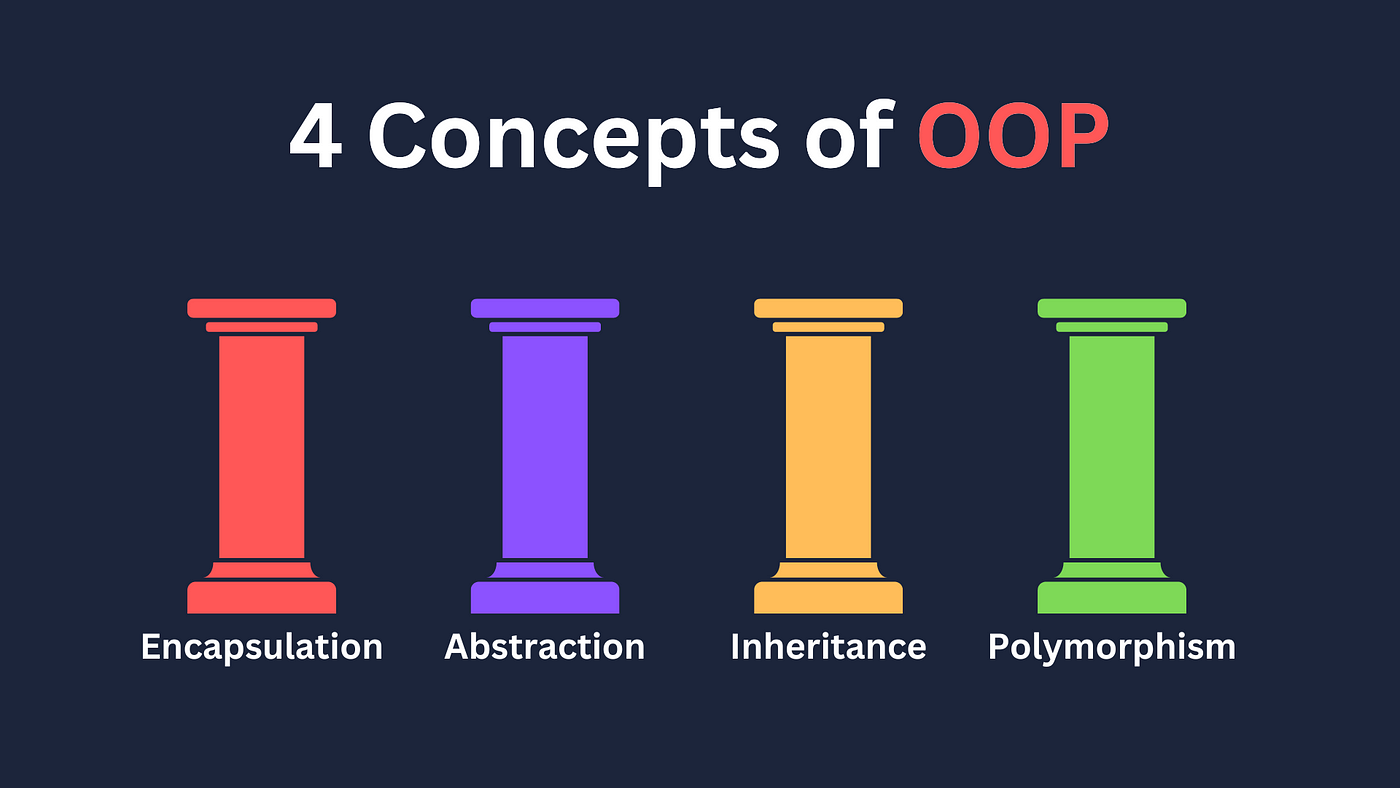- Published on
OOP - Object-oriented Programming

Intro
Object-Oriented Programming (OOP) is a fundamental paradigm that has revolutionized the way software is designed, developed, and maintained. With its emphasis on modularity, reusability, and maintainability, OOP has become the cornerstone of modern software engineering.
Key concepts
ObjectsandClasses: Objects are the basic building blocks of OOP, representing real-world entities with attributes (data) and behaviors (methods). Classes serve as blueprints or templates for creating objects, defining their structure and behavior.
Principles of OOP
Encapsulation
Encapsulation is the bundling of data and methods that operate on that data into a single unit, known as a class. It promotes information hiding, modularity, and code organization.InheritanceInheritance allows a class to inherit properties and behavior(methods and fields) from another class. Enable code reuse, extensibility, and hierarchical organization of classes.PolymorphismPolymorphism enables objects of different classes to be treated as objects of a common superclass through method overriding and method overloading. It promotes flexibility, dynamic binding, and code simplicity.
Benefits of OOP
ModularityBreaking down software into smaller, manageable components (objects and classes) for easier development and maintenance.Reusability
Reusing existing classes and objects to avoid redundancy and promote code efficiency, saving time and effort.Maintainability
Making it easier to update, debug, and maintain software through encapsulation, inheritance, and abstraction.Scalability
Scaling software systems by adding new objects and classes without affecting existing code, accommodating growth and change.Flexibility
Adapting to changing requirements and environments through polymorphism and inheritance, enhancing software adaptability and robustness.
Best practices of OOP
- Follow
SOLIDprinciples
Embrace the principles of Single Responsibility, Open/Closed, Liskov Substitution, Interface Segregation, and Dependency Inversion to create well-designed, modular, and maintainable code. - Use
Design Patterns
Learn and apply common design patterns like Factory, Singleton, Observer, Strategy, and MVC to solve recurring design problems and improve code structure. - Write Clean and Readable Code
Write code that is self-explanatory, well-documented, and adheres to coding standards and best practices to enhance code maintainability and readability. - Test-Driven Development (
TDD)
Embrace TDD practices to write tests before writing code, ensuring code correctness, reliability, and robustness. - Continuous Learning and Improvement
Stay updated with the latest trends, technologies, and best practices in OOP and software development, and continuously strive for improvement and mastery.